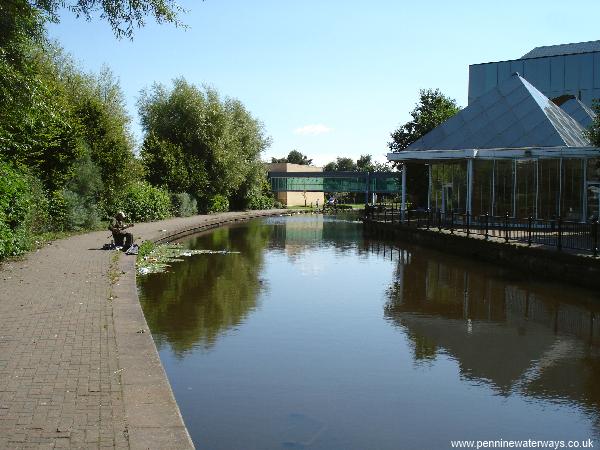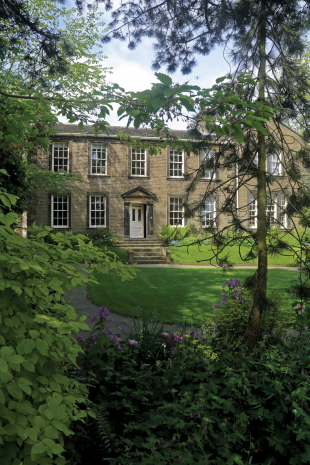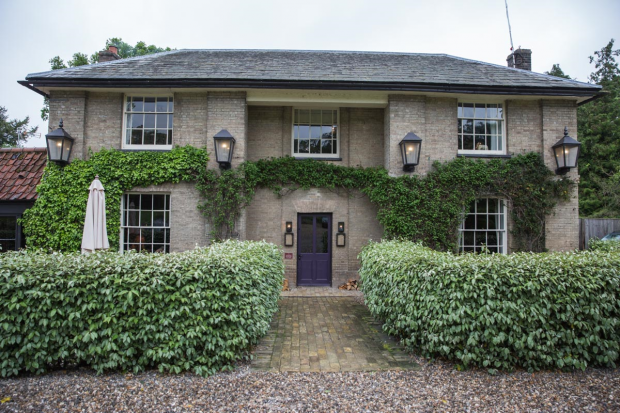Britain’s historical and geographical landscape is well known, so why not visit some of our IP beauty spots this summer?
The St Helen's Canal
The Canal and River Trust say that the Saint Helen's Canal may be the oldest in Britain. Opened in the mid eighteenth century, the canal facilitated the movement of coal and other manufactured products at the beginning of the industrial revolution. Glass from the St Helen’s Crown Glass Company, which opened in 1826, was one such product. Pilkington UK, as it is known today, became synonymous with Saint Helens. Through the patenting and licensing of the revolutionary float glass process by Sir Alistair Pilkington and Kenneth Bickerstaff during the 1950s, the world benefited from affordable plate glass building materials. Today, Pilkington Group Ltd employs over 3000 in the UK, and since 2006 it has been part of Nippon Sheet Glass Cooperation. From self-cleaning windscreens to high towers, Pilkington’s success is based on successful innovation.

Take a stroll along the canal past the 'Hotties', the site of the original Pilkington (and highly innovative) glass furnaces. An unintended consequence of Pilkington's success was the warming of the canal along this stretch. Until recently, anglers would come from miles around to catch tropical fish, protected for a few metres against the tough Lancashire winters. Innovation is often about benefiting from unexpected consequences. If you look hard enough into the waters, you might just see one.
Haworth
According to Visit Britain, last year 20% of visits with a literary link were to the small, Yorkshire town of Haworth, home of the Brontë sisters. Approximately 80,000 people a year call in at the Brontë Parsonage Museum, the former home of the world famous family. Those requiring taxis can use the local Bronte mini cab company. Anyone who fancies a take-away can order a curry from the local Brontë Balti house. For tea and cakes, there are the Ye Olde Brontë Tea Rooms. There are over twenty registered trade marks for Brontë brands, from bathroom fittings to marmalades.

The literary community and students of innovation sometimes clash in Haworth. For some, trade does not represent life at the Parsonage. For others, it explains the motivation of the sisters, who wrote themselves out of financial difficulties in a literary world dominated by men. One thing we can be certain of - like many residents of nineteenth century Haworth, the Brontë sisters died tragically young. There can be little doubt that, if they are keeping an eye on their home town, their inventive spirits won't feel out of place with the new neighbours.
The Kings Head in Letheringsett
In the mid-1950s, near this pub, poet Laureate John Betjeman was inspired to write a poem called ‘Lord Cozens-Hardy’. In the poem, he imagined a long-deceased Master of the Roll, haunting the little village of Letheringsett in Norfolk. In particular, Betjeman mentions this pub, The King’s Head, where the locals were too scared of the ghost of Lord Cozens-Hardy to walk home alone.

When you visit the bar to consider the individual brilliance of poets like John Betjeman, it is also worth remembering that Lord Cozens-Hardy, the butt of Betjeman's joke, wrote a few fine lines of his own. In 1909 when considering the trade mark 'Perfection', Cozens-Hardy created this saying:
Wealthy traders are habitually eager to enclose part of the great common of the English language and to exclude the general public of the present day, and of the future, from access to the enclosure.
Cozens-Hardy’s dictum underlines the importance of language and freedom in both intellectual property law and the creative process. Betjeman proved his point.
Scotland
Last year, the 121 whisky distillers of Scotland exported Scotch worth more than £4 billion. From Bladnoch in the south, to Scapa and Highland Park on Orkney. The Scotch Whisky Association (SWA) has ensured that an entire nation is sufficiently committed to the quality and repute of a product to take on the world. It is perhaps fitting that our summer tour of intellectual property hotspots should reach its destination anywhere in Scotland.

As we sip a glass of something soothing after a hard day's sightseeing and inventing, we should recall the SWA's recent statement:
Last year, Scotch whisky remained the biggest net contributor to the UK's balance of trade in goods. In 2016, without the impact of Scotch Whisky, the UK trade in goods deficit would have been 2.8% larger at almost £139 billion. Scotch Whisky accounts for over a fifth of the UK's total food and drink exports.
There are as many ways of managing intellectual property as there are products worth protecting. Each successful strategy represents a blend of inventiveness, application, teamwork, flair, luck, the ability to profit from luck, and hard work.
To keep in touch, sign up to email updates from this blog, or follow us on Twitter.
Recent Comments